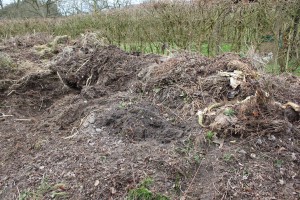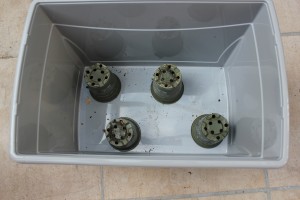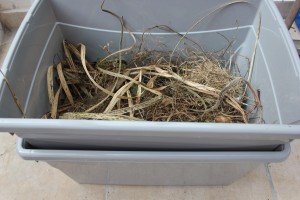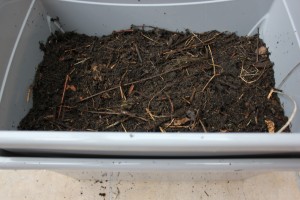Having spent three wonderful summers excavating in Turkey, I’ve come to love the Turkish cuisine. I’m not the only one – everyone that has ever participated in the Sagalassos project has fond memories of pide (a Turkish type of pizza), güveç (dishes baked in clay pots) or sütlaç (delicious burnt rice pudding). I’m still in awe of the magic Turkish cooks can perform with a simple ingredient like yoghurt, and I’ve tested quite a few Turkish recipes myself (see below).
So when a friend proposed to go out for dinner to a Turkish restaurant, I eagerly said yes. We went to the Brussels Mecca of Turkish food: the strip of Chausséee de Haecht between Rogierlaan and Botanique, where every other place serves pide or pasta (Turkish for all types of sweet pastries). Finding a parking spot was not easy (we finally discovered ‘parking Express’, shady at first sight but perfectly fine and not expensive), I definitely recommend going there by bus (stops: Robiano or Middaglijn/Méridien) or metro (Kruidtuin/Botanique). We picked out a restaurant using the well-known ‘locals’ technique: it can’t be bad if a lot of locals are eating here. This restaurant happened to be Hünkar Sofrasi (Chaussée de Haecht 89). We were not disappointed.
The waiter spoke Dutch (always a pleasant surprise in Brussels) while we put to practice our culinary Turkish (probably the only Turkish words we can still remember). The three of us ordered one plate of mixed mezze and çoban salata (shepherd’s salad) as a starter. True to Turkish tradition, we were stuffed by the end of this course. The mixed mezze consisted of various yoghurt- and vegetable-based salads, cheese börek, and calamares. Yum.
We then proceeded to the main course: copious amounts of mixed meat-cheese lahmacün (round thin Turkish pizza), mixed meat-cheese pide (boat-shaped Turkish pizza) and spinach-cheese pide. All were absolutely delicious. The waiter, probably foreseeing our imminent indigestions, gladly offered to wrap up the leftovers, providing us with food for at least another night’s dinner. The feast was concluded with Turkish tea on the house (sadly, none of us had room left for sütlaç). We paid 15 euros per person, very reasonable considering the quality and quantity of our dinner.

As my last two posts were also culinary reviews, I figured I owe you a recipe. In keeping with the Turkish theme, I’m offering my new favorite Turkish lentil soup from Turquoise by Greg Malouf. This hearty, perfect winter soup reminded me instantly of the thick soup served at Turkish peasant weddings, but its spicy and eloquent touch makes it just as perfect to be served at Christmas dinner. I might just consider selling my rights as firstborn for this soup (might!).
Lentil soup with mint dressing
Ingredients for about 6-8 people:
one big onion, finely chopped
two big winter carrots, finely chopped
2 tbsp of olive oil
2 garlic cloves, minced
2 tsp of ground cumin powder
2 tsp of spicy paprika powder (chili powder – not as spicy as cayenne)
2 tsp of mild paprika powder
1 small can of tomato concentrate
200 grams of red lentils (those tiny round orange ones – at the Turkish supermarket, or organic supermarket, or well-sorted supermarket)
2 liters of vegetable stock – or two liters of water with 4 stock cubes (the original recipe mentions chicken stock, which is fine too, but I like to keep it vegetarian)
5 tbsp of fine bulgur (Turkish supermarket)
2 tomatoes, seeds removed, chopped
sea salt, fresh black pepper
lemon parts, for serving
For the mint dressing (optional, but gives a very nice touch):
50 grams of butter
1 tsp of dried mint
1 tsp of paprika powder
How to:
Heat the oil in a large soup casserole on a low fire. Add the chopped onion, carrot and garlic and stir lightly. After a few minutes, add the cumin and two paprikas. Stir regularly until the vegetables start to become soft. Be careful not to let the spices burn (this happens to me sometimes in a casserole with a thin bottom) – it’s better to add the rest of the ingredients a little early if you see it’s starting to burn. Add in the tomato puree and mix well. Let it heat for one minute. Add the lentils and vegetable stock, bring to a boil. Let the soup boil softly with the lid on, stirring regularly for about 20 minutes, until the lentils are starting to fall apart, making the soup a bit ‘creamy’ or starchy. Then add the bulgur and the tomatoes. Season to taste with pepper and salt and let it simmer for another 10 minutes.
Melt the butter in a small saucepan and stir in the mint and paprika powder. Serve the soup in a hot bowl with a piece of lemon and add a few drops of the mint butter. Enjoy!























